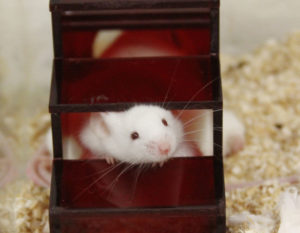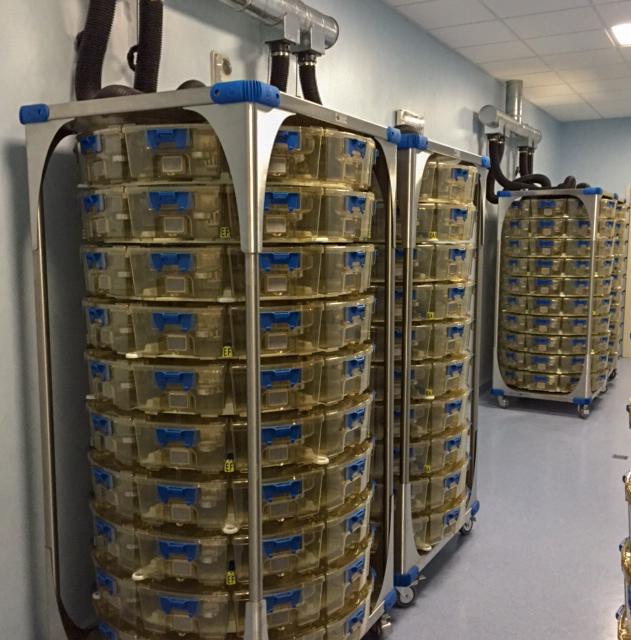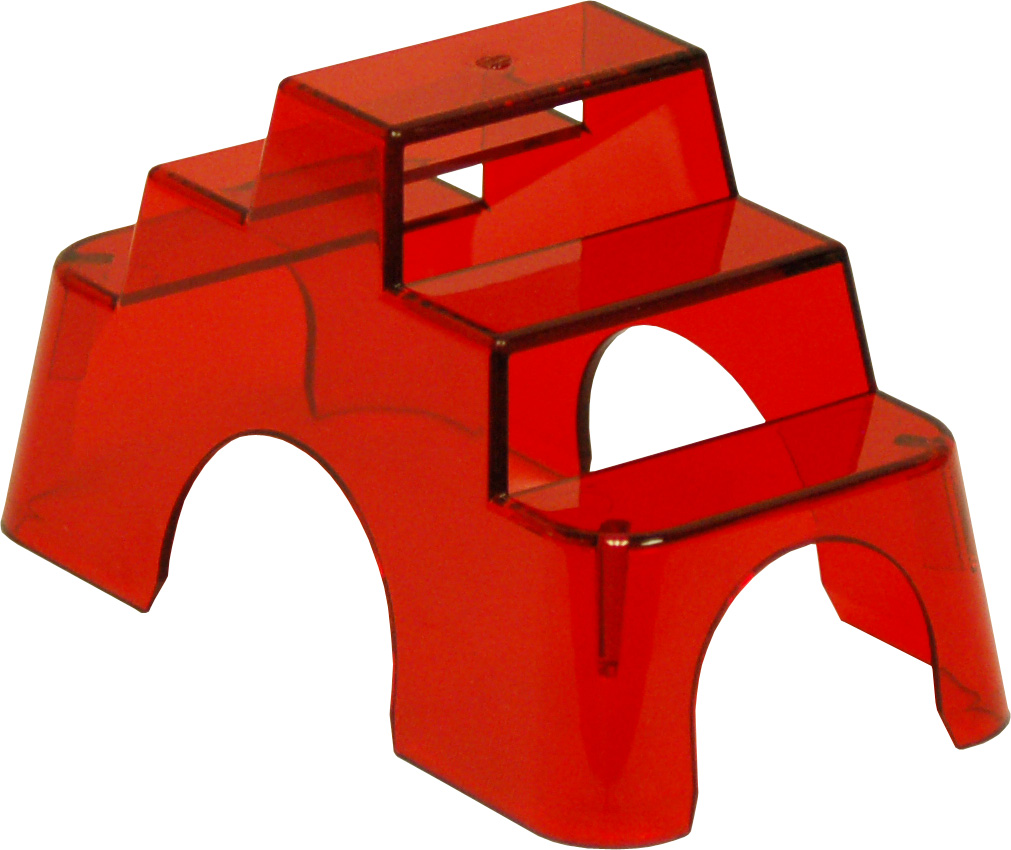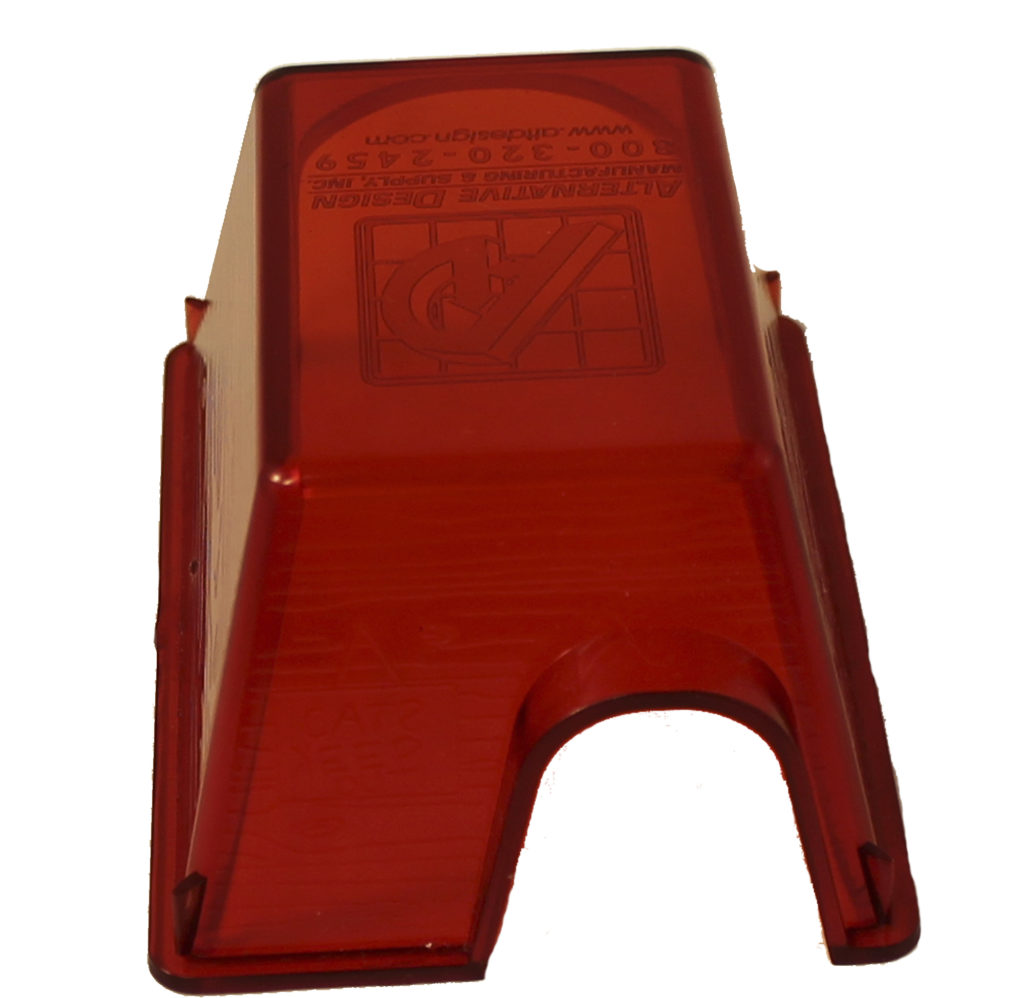What Light Levels are Best for My Rodent Housing Rooms?
This may not be the right question to ask any longer. As we continue to get more sophisticated in our understanding of mouse welfare and ways experiments are affected by non-experimental variables, it is becoming more apparent that we should be asking: What are optimal light levels for laboratory rodents? It’s important to understand that room light levels and mouse exposure levels are two different values.
When setting light levels for laboratory mice, most of us refer to the “Guide for the Care and Use of Laboratory Animals,” which states that rats and mice generally prefer cages with low light intensity and that room light levels of about 325 lux (30 foot-candles) approximately 1 meter (3.3 feet) above the floor is an appropriate guideline1. But how does room light level relate to light intensity at the cage level? How much light is an individual mouse exposed to in the cage? Can the mouse escape from the light if it chooses to?
Factors that affect light intensity at cage level
Light intensity varies with distance; hence cage-level illumination can change as a function of rack style, the rack’s position relative to the light source, and the cage location within the rack. So, at 325 lux at 1 meter above cage floor, the lux level a mouse experiences within its cage is dependent on where the rack is located within the room, how high or low the cage is on the rack, if the top rows of cages are shielded from the ceiling lights, and whether it is housed in a single-sided or double-sided library-style rack versus a carousel rack. The higher a cage is on the rack and the farther it is from the wall (the closer the cage is to the light source), the higher the light intensity the mouse will encounter.

Why should we care about light intensity?
Light intensity and light cycles can affect the physiology, development, and behavior of rodents and should be controlled in scientific studies. Light cycles are important for maintaining circadian rhythm and in most facilities are set at a 12:12 or 14:10 for the light:dark cycle. We often keep light in housing rooms at levels for staff to properly see to perform their daily tasks, but rodents prefer low light intensity2 and for most pigmented strains, this is below 60 lux, and for albino strains it is below 5 lux3,4. While the guidelines help to minimize retinal phototoxicity, light levels are influenced greatly by the factors noted above, and the illumination level that is most important is the actual in-cage illumination. Retinal degeneration can take place, especially in albino rodents, even at very low lux levels5. Many research investigators who work on retinal light damage and neuroprotection recommend dim to very dim light levels during the light cycle. To avoid confounding effects, they use light levels of 5 lux to 20-30 lux6.
Does light intensity vary with rack style?
It is important to keep lighting intensity at appropriate levels and to minimize the intensity variability among the cages on a rack in order to minimize experimental variability. Two studies were undertaken to compare light levels in two types of mice and rat racks; intra-rack variability in light exposure was compared between a single-sided library-style mouse and rat rack with Optimice and Optirat Plus carousel racks, respectively. Compared to the library-style rack, both carousel racks produced less variability in light exposure between cages, and the light intensity levels of the carousel racks were lower overall than in library-style cages. Moreover, light exposure within individual carousel rack cages approached or surpassed standards suggested for pigmented and non-pigmented rodents. Providing a stable and less intense lighting environment for animals is highly recommended7, and both the Optimice and Optirat Plus carousel racks effectively meet both conditions. The carousel racks also alleviate the concern that cages at the bottom of the rack or cages in the back against a wall are not exposed to ample light when, in fact, keeping light levels low appears to be preferred by laboratory mice.
Can cages near the top of some rack styles increase stress levels?
A highly relevant epidemiological survey on male mice aggression found several predictors of fighting, among which were cage location on the rack and rack orientation in the room. Mice housed on higher rows in the rack showed evidence of increased stress, including changes in stress physiology, immune function, and abnormal behavior8. The authors suggest that animals on higher rows may be exposed to greater noise and vibration in traditional IVC racks (due to the proximity to the fans and blowers), and to brighter lights. For instance, light levels at the top of a rack can be 80 times brighter than at the bottom of the rack1.
Does the cage or rack location relative to the room wall increase stress levels?
The above study also found that library-style racks oriented parallel to the wall may be more exposed to bright light. But notably, cages on these racks are also exposed to more human traffic; however, in racks oriented perpendicular to the wall, only the outermost cages are exposed to similar levels of human traffic. And exposure to human traffic is related to abnormal behavior in other species8. So, if a cage on a carousel rack is positioned in the corner or against a wall, this reduces not only exposure to bright light, but also exposure to human traffic, which is a clear welfare advantage, especially for delicate transgenic mice or sensitive new litters.

How can I help provide a less stressful environment for my mice?
First measure your lights — a lux meter can be purchased inexpensively. To understand the light levels that the mice will experience, place the sensor in an empty cage, especially at the front and at the back of the cage and measure light levels at every row on the rack.
If your lux levels are too high, there are several ways to help lessen the intensity for your mice:
Control light at the source: Dim the lights in the housing room; remove every other tube (or similar) from the ceiling light ballasts or purchase opaque perforated sleeves that help reduce the light.
Control light at the rack level: Avoid housing cages on the rack with the highest light exposure, usually the top rows.

Control light inside the cage: Mitigate light levels in the cage by using a shelter or by providing an ample amount of nesting material so mice can hide or escape from bright light.

Change equipment: When your budget allows, evaluate different rack styles and choose racks that provide light protection to mice at cage level. Red cages are also commercially available to help protect lab mice from bright light.
What are foot-candles?
One foot-candle is the amount of illumination produced by a standard candle at a distance of 1 foot, also known as one lumen per square foot. A lux is one lumen per square meter. Fun fact: Lux is Latin for light. If you need to convert between lux and foot-candles: 1 foot-candle equals 10.76 lux; however, most just use 1 foot-candle to 10 lux for ease of calculation.
What light levels should I keep my housing room at? Not the simple question it appears to be but do turn your lights down low
Light exposure in laboratory mice is affected by many different factors such as equipment style, equipment location, and human-preferred light levels. What is consistently clear is that light levels affect stress levels and physiology, and lower light levels are preferred by mice. Understanding the implications of light intensity, taking measurements, and subsequently taking steps within your means to minimize light intensity and variability can help increase welfare and decrease experimental variability.

References:
1National Research Council. 2011. Guide for the Care and Use of Laboratory Animals: Eighth Edition. Washington, DC: The National Academies Press.
2Blom HJM, Van Tintelen G, Van Vorstenbosch CJ, Baumans V, Beynen AC. 1996. Preferences of mice and rats for types of bedding material. Lab Anim 30:234-244.
3Animal Welfare Unit, NSW Department of Primary Industries. ARRP Guideline 22: Guidelines for the Housing of Mice in Scientific Institutions.
4Animal Welfare Unit, NSW Department of Primary Industries. ARRP Guideline 20: Guidelines for the Housing of Rats in Scientific Institutions.
5Bell BA, Kaula C, Bonilhaa VL, Rayborna ME, Shadracha K, Hollyfielda JG. 2015. The BALB/c mouse: Effect of standard vivarium lighting on retinal pathology during aging. Exp Eye Res 135:192–205.
6De Vera Mudry MC, Kronenberg S, Komatsu S-I, Aguirre GD. 2013. Blinded by the Light: Retinal Phototoxicity in the Context of Safety Studies. Toxicologic Pathology 41:813-825.
7M J Castelhano-Carlos and V Baumans. 2009. The impact of light, noise, cage cleaning and in-house transport on welfare and stress of laboratory rats. Laboratory Animals 43:311–327.
8Theil JH, Ahloy‑Dallaire J, Weber EM, Gaskill BN, Pritchett‑Corning KR, Felt SA, Garner JP. 2020. The epidemiology of fighting in group‑housed laboratory mice. Scientific Reports 10:16649.


